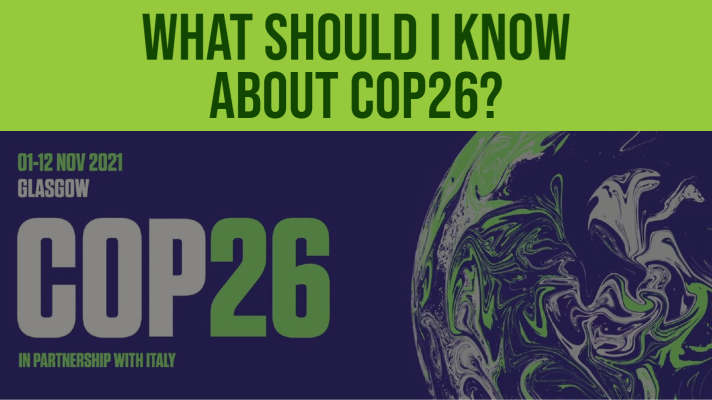What Should I Know About COP26?
Maybe you’re a little tuned out of the environmental news lately, but this one is a biggie. There’s a lot of questions around it, the main ones being what should I know about COP26? What is COP26? Where is it? Who is attending? What should I know about it? Let’s just jump into it, shall we?
What is COP?
COP stands for “Conference of the Parties”. This is essentially where countries around the world come together to plan for the fight against climate change. These conferences have been taking place for almost three decades, this year being the 26th edition. This year it is held in Glasgow, Scotland from 1st November through the 12th November 2021.
There was a huge breakthrough at the COP21 event in Paris, 2015. You may have heard of the “Paris Climate Agreement”, and this is where it originated.
The Paris Climate Agreement
Briefly, just so we’re all clear, the Paris Climate Agreement is an international treaty on climate change. Every country will work together to tackle the rising global temperatures. They will come together to keep the global average temperature “well below” 2 degrees above pre-industrial levels. In 2017, human-induced warming reached 1 degree above pre-industrial levels. The goal is to keep temperatures below 1.5 degrees, and we’re clearly not far off that now.
Not Far Off, Or Are We?
We’ve predicted a rise from 1 degree to 1.5 degrees by 2040, which technically is only half a degree. However, do you know the effects this increase could have on our planet? An increase of 1.5 degrees would bring:
- 10 extra days of extreme heat per year.
- Warm spells of a further 17 days.
- Overexposure to the sun with effects ranging from dehydration to sunburn, to cancer.
- Disruptions to travel by damage to road surfaces and rail lines.
- Potential water shortages.
Yes, I know more sunny days doesn’t sound too bad for rainy England. Although, we should probably be prioritising the health of our planet over a couple of extra hot days. So, why is a 1.5-degree temperature rise the boiling point?
Boiling point quite literally. At 2-degrees of global warming, a third of the population would be exposed to severe heat leading to more health problems and heat-related deaths. Warm-water coral reefs would mostly be destroyed, and the Arctic Sea ice would melt entirely, both devastating the wildlife they as ecosystems support.
A 1.5-degree rise would still have serious impacts on the world, but they would be less severe. Fewer species would become extinct, there would be a lower risk of food and water shortages, health threats such as air pollution and extreme heat would also be decreased. So, back to the point, what are the aims of COP26?
Aim 1 – To secure global Net-Zero by mid-century and keep 1.5 degrees within reach.
Countries are being asked to come forward with 2030 emission reductions targets to meet net-zero by 2050. They will need to:
- Accelerate the phasing out of coal.
- Invest in renewables.
- Reduce deforestation.
- Increase the uptake of electric vehicles.
Aim 2 – To adapt to protect communities and natural habitats.
Even if we reduce emissions, the climate will continue to change with devastating effects. Countries must:
- Protect and restore ecosystems.
- Build defences.
- Introduce warning systems.
- Make infrastructure and agriculture more resilient to avoid loss of homes, livelihoods, and lives.
Aim 3 – To mobilise finance.
To realise aims 1 and 2, this aim must be achieved. This will be achieved through:
- Developed countries must raise at least $100bn in climate finance per year.
- International financial institutions must play their part.
- Working towards unleashing trillions in private and public sector finance is required to secure global net zero.
Aim 4 – To work together to deliver.
To achieve all of these aims, we must work together. At COP26 they plan to:
- Finalise the Paris Rulebook – rules needed to implement the Paris Agreement.
- Accelerate collaboration between governments, businesses, and civil society to deliver on climate goals faster.
You can read more about their goals here: https://ukcop26.org/cop26-goals/
Keep up with COP26 as it happens here: https://ukcop26.org/news/
Tags : cop26, Global warming, net-zero, paris climate agreement

